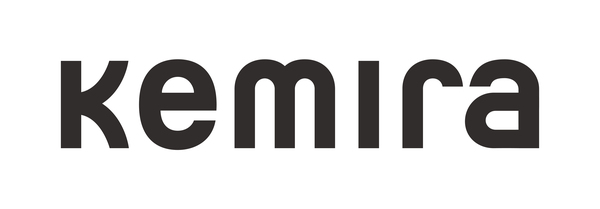For most tissue makers wet strength resin (WSR) accounts for the major portion of their chemical spending. The economics of wet-strengthened grades largely depend on resin efficiency. The cost pressure also comes from stricter regulations of chloro-organic materials, which are suspected carcinogens.
The three commonly regulated materials found in WSRs are 3-chloro-1.3-propandiol (CPD), 1.3-dichloro-2-propanol (DCP), and absorbable organic chlorine (AOX). The regulators’ concerns arise from the migration of these materials from paper to food or their discharge with waste water, potentially harming people and the environment.
Improving WSR chemistry
Since the mid-1980s, the WSR chemistry has undergone a huge transformation to much lower residual levels of chloro-organics. The existing resins in the market have different levels of CPD, DCP and AOX and are classified as generation (G) 1, 2, 2.5, 3 and 4. The higher the G-number, the cleaner the resin. In the EU countries, the G1 resins are not used anymore since they have to be labeled as toxic and carcinogenic. In addition, G1 resins contain high amounts of unreacted epichlorohydrine. The predominant resins marketed in the EU for tissue are G2 and G2.5; whereas, the cleanest G3 and G4 resins are suitable for coffee filters and tea bags. The cleaner resins are highly technical materials and tend to cost more. Therefore, the main drivers for selecting an optimal WSR are regulatory targets and the cost that has to be balanced out.

Use less WSR and achieve more benefits
The regulatory pressure continues to increase.
One example is the EU Directive 2010/75/EU, effective of September 2018, which reduced the AOX limit in the effluent in the wet-strength paper production from 150 to 50g/t of paper produced.
Attuned to the industry needs, Kemira has developed cost-saving and sustainable technologies for wet-strength tissue production. These include high efficiency and low AOX resins as well as complimentary functional promoters that further improve the efficiency of WSR. Higher efficiency helps not only use less resin and reduce the operating cost but also reduce the level of chloro-organics in the tissue sheet and effluent.
Cost-saving and sustainable technologies for wet-strength tissue production

High-performance wet strength resins
The obvious solution to reducing the cost of wet-strengthened tissue is to use less WSR, without jeopardizing the sheet quality targets, for which Kemira offers high-performance FennoStrength® resins. Often it is possible to reduce the resin dosage by around 10-15%. Lower dosages allow for chemical savings as well as lower AOX in the paper and effluent. Additional benefits can be achieved from machine runnability related to more balanced charge, such as a lower risk of deposits, felt plugging or excessive foam.
When AOX in the effluent is on the limit, tissue producers must resort to cleaner G2.5 resins. A drawback of G2.5 resins is that they are generally more expensive to run. Not only is the product cost higher due to higher manufacturing costs, but their efficiency decreases in the post-cleaning process. To overcome this problem, Kemira has developed an improved manufacturing technology that allows the production of a clean G2.5 resin without the loss of efficiency.
Functional promoter reduces consumption of WSR
A further reduction in the WSR consumption can be achieved by using anionic functional promoters. WSRs are high charge polymers and tend to overcationize fibers, resulting in decreased resin retention and its low efficiency. Besides overusage, unretained WSR can cause runnability issues such as excessive foaming, felt plugging and decreased dewatering. With the help of Kemira’s anionic FennoBond, fiber charge can be rebalanced, allowing for more effective retention of WSR, thus improving the economics and keeping machine runnability under control.


Case study 1: chemical savings and AOX on target
A towel producer has tight control for the AOX level in the paper, requiring the use of astandard G2.5 resin, which contributed to production cost.
Reducing chemical cost was important for this machine. Kemira offered a new high-efficiency G2.5 FennoStrength®. The machine trial showed 25% less resin was needed to maintain sheet quality and AOX targets.
Case study 2: anionic FennoBond improves safety and provides economic benefits
A towel manufacturer was using carboxymethylcellulose (CMC) powder to control fiber charge and provide dry tensile. CMC created safety hazards such as dust and slippery floor around the CMC make-down area. CMC was replaced with a synthetic anionic FennoBond that is supplied in a liquid form and only requires a pump to feed the chemical. Anionic FennoBond was not only safer to use, but it resulted in improved WSR efficiency. The wet tensile and dry tensile remained on target at 22% less WSR, generating 10% net savings.

Conclusions
Wet strength resin (WSR) is a key contributor to the cost of a tissue machine operation.
The WSR application cost can further increase due to limitations on CPD, DCP, and AOX levels in paper and effluent. Kemira has developed advanced solutions to allow tissue makers to remain compliant with regulations while keeping the chemical cost under control.
These solutions include high efficiency and low AOX FennoStrength® resins and anionic FennoBond for charge balance and improved WSR retention. Additional benefits of increased WSR efficiency are improved machine runnability and increased productivity.

Kemira
Kemira provides expertise and tailored combinations of chemicals for water-intensive industries. We innovate together with our customers for sustainable solutions where water meets chemistry.
We have unique expertise in applying chemicals and supporting pulp & paper producers to innovate and constantly improve their operational efficiency. We develop and commercialize new products to fulfil customer needs and to ensure the leading portfolio of products and services for paper wet-end, focusing on packaging and board as well as tissue.
For most tissue makers wet strength resin (WSR) accounts for the major portion of their chemical spending. The economics of wet-strengthened grades largely depend on resin efficiency. The cost pressure also comes from stricter regulations of chloro-organic materials, which are suspected carcinogens.
The three commonly regulated materials found in WSRs are 3-chloro-1.3-propandiol (CPD), 1.3-dichloro-2-propanol (DCP), and absorbable organic chlorine (AOX). The regulators’ concerns arise from the migration of these materials from paper to food or their discharge with waste water, potentially harming people and the environment.
Improving WSR chemistry
Since the mid-1980s, the WSR chemistry has undergone a huge transformation to much lower residual levels of chloro-organics. The existing resins in the market have different levels of CPD, DCP and AOX and are classified as generation (G) 1, 2, 2.5, 3 and 4. The higher the G-number, the cleaner the resin. In the EU countries, the G1 resins are not used anymore since they have to be labeled as toxic and carcinogenic. In addition, G1 resins contain high amounts of unreacted epichlorohydrine. The predominant resins marketed in the EU for tissue are G2 and G2.5; whereas, the cleanest G3 and G4 resins are suitable for coffee filters and tea bags. The cleaner resins are highly technical materials and tend to cost more. Therefore, the main drivers for selecting an optimal WSR are regulatory targets and the cost that has to be balanced out.

Use less WSR and achieve more benefits
The regulatory pressure continues to increase.
One example is the EU Directive 2010/75/EU, effective of September 2018, which reduced the AOX limit in the effluent in the wet-strength paper production from 150 to 50g/t of paper produced.
Attuned to the industry needs, Kemira has developed cost-saving and sustainable technologies for wet-strength tissue production. These include high efficiency and low AOX resins as well as complimentary functional promoters that further improve the efficiency of WSR. Higher efficiency helps not only use less resin and reduce the operating cost but also reduce the level of chloro-organics in the tissue sheet and effluent.
Cost-saving and sustainable technologies for wet-strength tissue production

High-performance wet strength resins
The obvious solution to reducing the cost of wet-strengthened tissue is to use less WSR, without jeopardizing the sheet quality targets, for which Kemira offers high-performance FennoStrength® resins. Often it is possible to reduce the resin dosage by around 10-15%. Lower dosages allow for chemical savings as well as lower AOX in the paper and effluent. Additional benefits can be achieved from machine runnability related to more balanced charge, such as a lower risk of deposits, felt plugging or excessive foam.
When AOX in the effluent is on the limit, tissue producers must resort to cleaner G2.5 resins. A drawback of G2.5 resins is that they are generally more expensive to run. Not only is the product cost higher due to higher manufacturing costs, but their efficiency decreases in the post-cleaning process. To overcome this problem, Kemira has developed an improved manufacturing technology that allows the production of a clean G2.5 resin without the loss of efficiency.
Functional promoter reduces consumption of WSR
A further reduction in the WSR consumption can be achieved by using anionic functional promoters. WSRs are high charge polymers and tend to overcationize fibers, resulting in decreased resin retention and its low efficiency. Besides overusage, unretained WSR can cause runnability issues such as excessive foaming, felt plugging and decreased dewatering. With the help of Kemira’s anionic FennoBond, fiber charge can be rebalanced, allowing for more effective retention of WSR, thus improving the economics and keeping machine runnability under control.


Case study 1: chemical savings and AOX on target
A towel producer has tight control for the AOX level in the paper, requiring the use of astandard G2.5 resin, which contributed to production cost.
Reducing chemical cost was important for this machine. Kemira offered a new high-efficiency G2.5 FennoStrength®. The machine trial showed 25% less resin was needed to maintain sheet quality and AOX targets.
Case study 2: anionic FennoBond improves safety and provides economic benefits
A towel manufacturer was using carboxymethylcellulose (CMC) powder to control fiber charge and provide dry tensile. CMC created safety hazards such as dust and slippery floor around the CMC make-down area. CMC was replaced with a synthetic anionic FennoBond that is supplied in a liquid form and only requires a pump to feed the chemical. Anionic FennoBond was not only safer to use, but it resulted in improved WSR efficiency. The wet tensile and dry tensile remained on target at 22% less WSR, generating 10% net savings.

Conclusions
Wet strength resin (WSR) is a key contributor to the cost of a tissue machine operation.
The WSR application cost can further increase due to limitations on CPD, DCP, and AOX levels in paper and effluent. Kemira has developed advanced solutions to allow tissue makers to remain compliant with regulations while keeping the chemical cost under control.
These solutions include high efficiency and low AOX FennoStrength® resins and anionic FennoBond for charge balance and improved WSR retention. Additional benefits of increased WSR efficiency are improved machine runnability and increased productivity.
Products
Adhesives, Aluminium sulphate, Anti-foaming agents, Anti-slime agents, Auxiliary chemicals for the paper industry, Bactericides, Biocides, Cleaning agents, Coating additives, Corrosion inhibitors, Deinking agents, Drainage agents, Dry strength improving agents, Emulsifiers, Fixatives, Flocculation agents, Flotations agents, Fungicides, Interfering substance control agents, Paper finish improvers, Pitch control, Resines, Retention agents, Sedimentation agents, Sizes, Sizing agents, Sludge dewatering agents, Surface finish improvers, Waste water purifying agents, Wet strength agents, Wetting agents, Wire conditioning agents, Wire life extenders .

